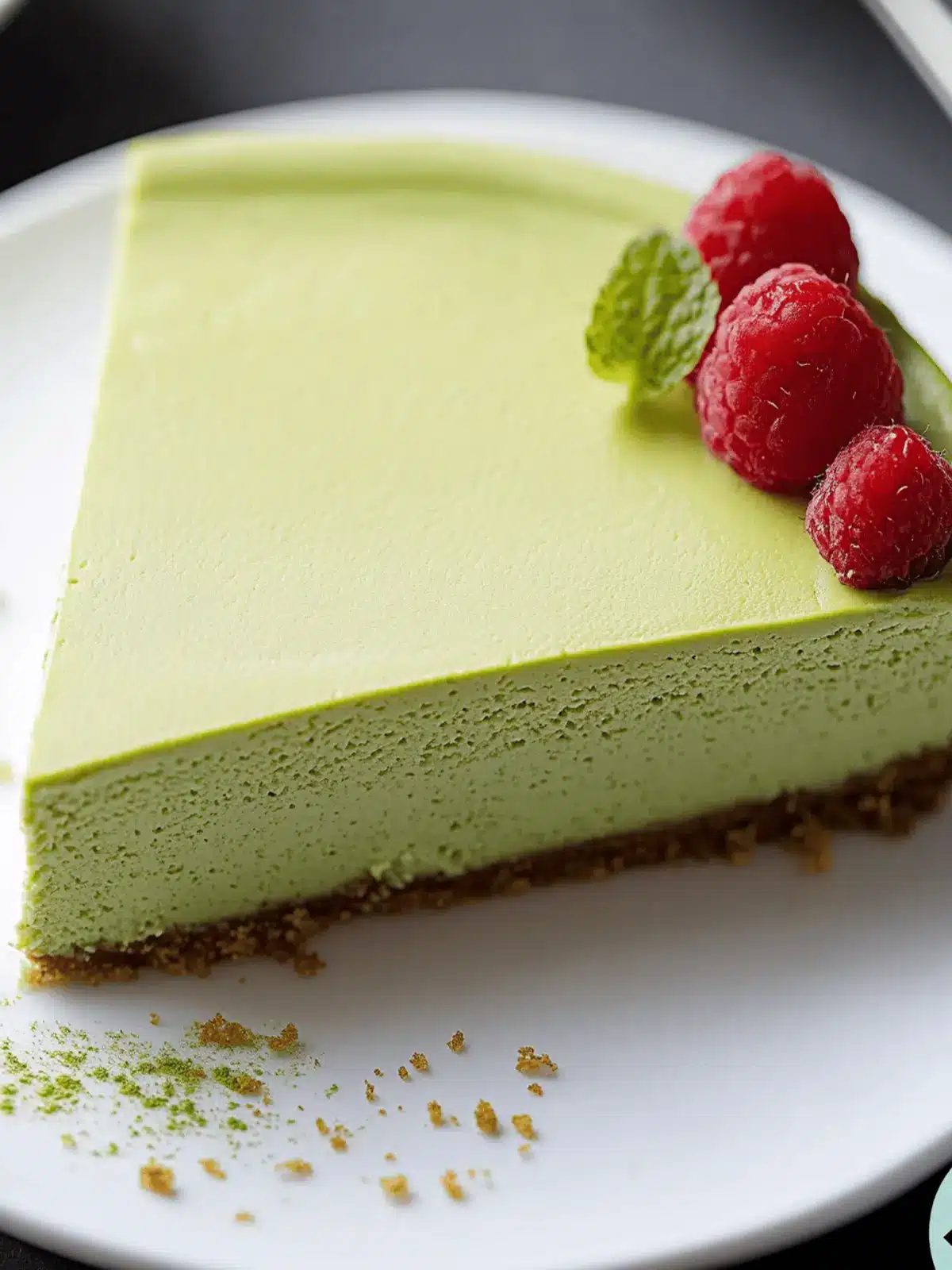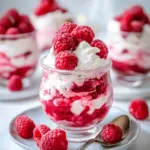There’s a certain joy that comes when you discover a dessert that feels indulgent yet light, and this Original Matcha Japanese Cheesecake fits the bill perfectly. Picture this: creamy layers infused with the earthy notes of matcha, all nestled in a fluffy, cloud-like texture. I was inspired to create this cheesecake after a calming afternoon spent sipping matcha tea and letting the world slow down for a moment. It became clear that I wanted a dessert that captured that serene experience.
This recipe is not only a feast for the eyes with its vibrant green hue, but it also serves as a delightful balance between rich and airy. With every bite, you experience the gentle sweetness alongside the subtle bitterness of high-quality matcha—a combination that’s incredibly satisfying yet never heavy. Perfect for impressing guests or just treating yourself, this cheesecake is a crowd-pleaser that harmoniously blends tradition and modern flavors. Get ready to elevate your dessert game with this light, creamy delight that proves homemade treats can truly shine!
Why is Original Matcha Japanese Cheesecake special?
Indulgent Yet Light: This cheesecake offers rich flavors without the heaviness, perfect for those seeking a satisfying dessert experience.
Visual Appeal: The vibrant green hue not only looks stunning but also hints at the earthy matcha flavor within!
Balanced Flavor: The combination of creamy sweetness with a hint of bitterness creates a uniquely delicious taste.
Crowd-Pleasing Treat: Elevate your gatherings with a dessert that’s sure to impress family and friends.
Easy to Make: With simple steps, you can recreate this delightful dessert in your own kitchen! Try pairing it with a steaming cup of matcha tea for an even better experience.
Original Matcha Japanese Cheesecake Ingredients
For the Batter
• Cream Cheese – Adds creaminess and richness; choose full-fat for the best flavor.
• Butter – Enhances the cheesecake’s texture and richness; can substitute with vegan butter for a dairy-free option.
• Egg Yolks – Provide structure and creaminess; essential for that luscious texture.
• Granulated Sugar – Sweetens the batter and aids in achieving the right texture; coconut sugar can be used for a healthier alternative.
• Cake Flour – Contributes to a tender crumb; substitute with all-purpose flour or a gluten-free blend if needed.
• Cornstarch – Stabilizes the cheesecake, ensuring it remains creamy without being dense.
• Baking Powder – Helps the cheesecake rise slightly during baking.
• Vanilla Extract – Brings depth of flavor; you can substitute with almond extract for a different profile.
• Lemon/Yuzu Juice – Provides a tangy acidity to balance the sweetness; lime juice works in a pinch.
• Milk – Moistens the batter; almond or oat milk makes for a great dairy-free alternative.
• Culinary Matcha – Elevates flavor and gives the cheesecake its iconic green color; use ceremonial grade for the best results.
For the Meringue
• Egg Whites – Create a light meringue, essential for that fluffy texture in your Original Matcha Japanese Cheesecake.
• Cream of Tartar – Stabilizes egg whites during meringue preparation.
Optional Toppings
• Confectioners’ Sugar – Optional for dusting, adds sweetness and enhances presentation.
• Fresh Fruits – Such as strawberries or blueberries; these add a refreshing contrast and flavor to your dessert.
With these carefully selected ingredients, you’re set to create a delectable Original Matcha Japanese Cheesecake that is sure to impress!
How to Make Original Matcha Japanese Cheesecake
-
Prepare the Batter: In a saucepan over low heat, combine cream cheese and butter. Stir until creamy before adding granulated sugar, egg yolks, cake flour, cornstarch, culinary matcha, and lemon juice. Mix until smooth and well-combined.
-
Make the Meringue: In a clean bowl, whisk the egg whites until soft peaks form. Gradually add cream of tartar and sugar, continuing to whisk until stiff peaks are achieved. This creates the light texture essential for the cheesecake.
-
Combine Mixtures: Gently fold the meringue into the cheesecake batter in three parts. Be careful not to overmix; aim for a smooth, homogenous mix without visible white streaks. Pour the combined mixture into a prepared pan.
-
Bake: Place your cake pan into a larger baking dish and fill the outer dish with water. Bake at 320°F (160°C) for 18 minutes, then lower the temperature to 285°F (140°C) and continue baking for 50-60 minutes. The cheesecake should be slightly golden and set but still jiggly in the center.
-
Cool the Cheesecake: Once baked, turn off the oven and let the cheesecake cool inside for 20 minutes with the oven door ajar. This helps prevent cracks and allows for a gentle cooling process.
-
Serve: Carefully unmold the cheesecake and dust with confectioners’ sugar and additional matcha if desired. For a delightful finishing touch, garnish with fresh fruits like strawberries or blueberries for added freshness.
Optional: Serve with a cup of hot matcha tea for a delightful pairing!
Exact quantities are listed in the recipe card below.
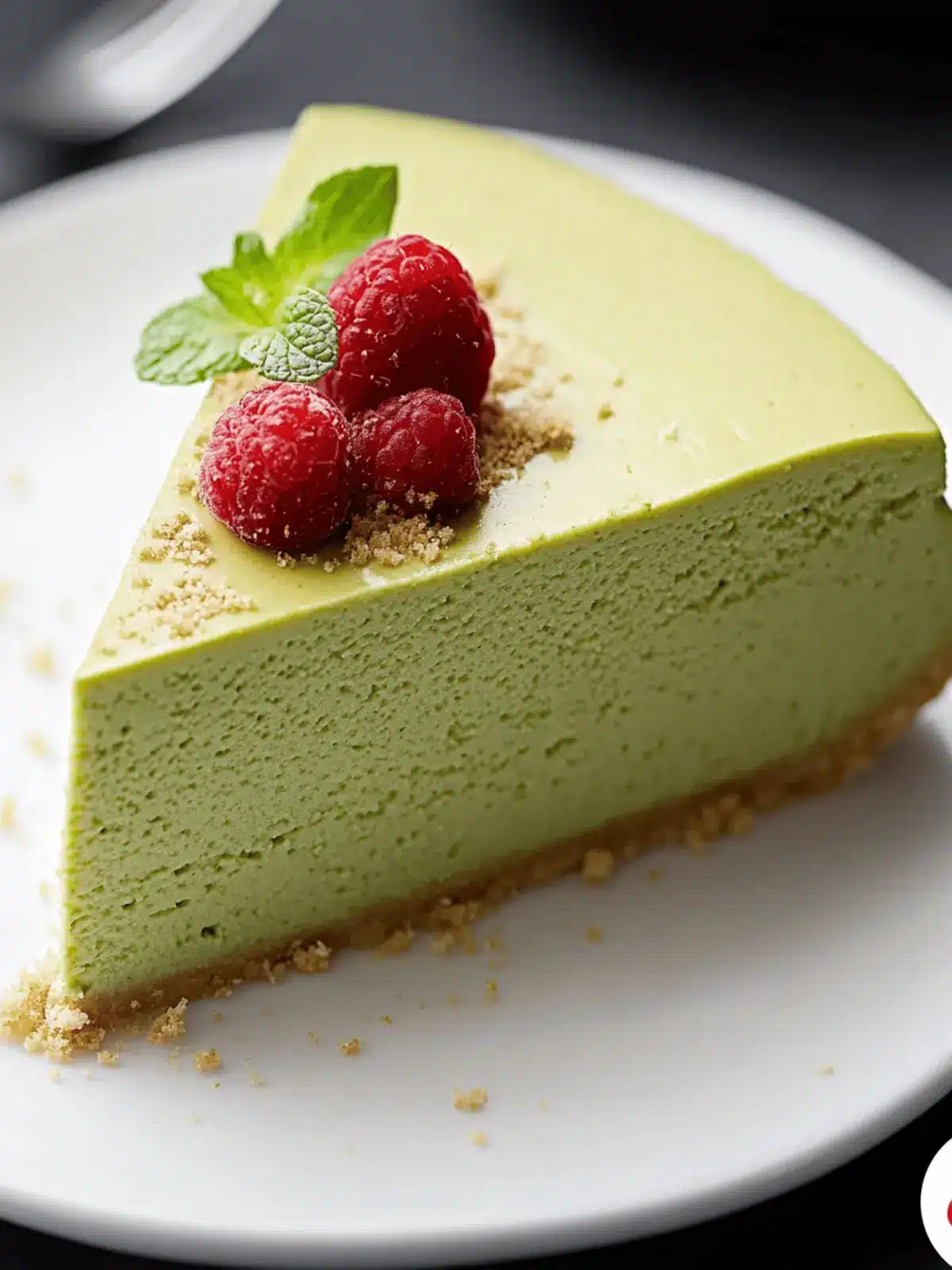
How to Store and Freeze Original Matcha Japanese Cheesecake
-
Fridge: Store the cheesecake in an airtight container for up to 3 days. It can be enjoyed chilled or at room temperature, allowing flavors to deepen over time.
-
Freezer: To freeze, wrap the cheesecake tightly in plastic wrap and then in aluminum foil. It can be kept in the freezer for up to 3 months. Thaw in the fridge overnight before serving.
-
Reheating: For serving, if desired, gently bring to room temperature before enjoying. Avoid microwaving, as it can alter the texture of this delicate cheesecake.
Expert Tips for Original Matcha Japanese Cheesecake
-
Quality Matcha Matters: Use high-quality, ceremonial matcha for the best flavor and vibrant color in your cheesecake. Lower-quality matcha can lead to a dull taste.
-
Room Temperature Eggs: Ensure your egg whites and yolks are at room temperature for optimal volume and aeration when whisking, giving your cheesecake a fluffy texture.
-
Gentle Folding: When incorporating the meringue into the batter, fold gently to keep the air in. Overmixing can result in a dense final product, rather than the lightness of the Original Matcha Japanese Cheesecake.
-
Watch the Baking: Keep an eye on the cheesecake as it bakes; avoid overheating to prevent cracks. Baking in a water bath helps regulate temperature and keeps your dessert moist.
-
Cooling Cues: Be patient during the cooling process; letting it cool in the oven with the door ajar helps prevent sudden temperature changes that can cause cracks.
-
Storage Tip: Refrigerate any leftovers for up to 3 days, and consider serving it chilled or at room temperature for the best flavor and texture experience.
Original Matcha Japanese Cheesecake Variations
Get ready to personalize your cheesecake with these fun and tasty twists, each one designed to elevate the delightful essence of matcha!
- Dairy-Free: Substitute cream cheese and butter with vegan options to make this cheesecake suitable for a dairy-free treat.
- Gluten-Free: Swap out cake flour for a gluten-free blend, allowing everyone to enjoy this delicious dessert without worry.
- Sweetener Swap: Use honey or maple syrup instead of granulated sugar for a natural sweetness that adds depth and flavor.
- Flavor Boost: Add a teaspoon of almond or orange extract to the batter for a unique twist on the traditional flavor profile.
- Zesty Touch: Mix in lemon or lime zest to the batter for an extra layer of brightness that complements the earthiness of matcha beautifully.
- Choco Matcha: Fold in mini chocolate chips to the batter for a delightful contrast of flavors and a touch of indulgence in each bite.
- Fruit Fusion: Top with tropical fruits like mango or passion fruit to create a refreshing burst of flavor that perfectly balances the cheesecake.
- Layered Delight: Create a layered effect by mixing different flavors of cheesecake—try a layer of vanilla or strawberry with the matcha for an eye-catching presentation!
Each of these variations invites creativity and fun, transforming your Original Matcha Japanese Cheesecake into a personal masterpiece! Enjoy the process as you experiment and savor the delightful outcomes.
What to Serve with Original Matcha Japanese Cheesecake?
Pair your delightful cheesecake with flavors that enhance its unique matcha profile and light texture.
- Creamy Matcha Latte: A warm, frothy pairing that complements the matcha flavor, providing a soothing contrast to the cheesecake’s sweetness.
- Fresh Berries: Strawberries or blueberries add a burst of acidity and freshness, beautifully balancing the rich creaminess of the cheesecake.
- Japanese Green Tea: The subtle bitterness of high-quality green tea echoes the cheesecake’s flavors, creating a harmonious and refreshing experience.
- Coconut Sorbet: Light and refreshing, this frozen treat serves as a cool contrast to the rich creaminess, enhancing the dessert’s lightheartedness.
- Matcha Ice Cream: For matcha lovers, this treat will elevate the experience even further, seamlessly blending flavors and textures.
- Yuzu Citrus Salad: A refreshing salad with yuzu dressing brings acidity that cuts through the richness while adding vibrant citrus notes.
- Sesame Cookies: Crisp, nutty sesame cookies provide a delightful contrast in texture, perfect for a sweet and savory combination.
- Chai Tea: The warm spices of chai perfectly complement the matcha, inviting cozy vibes alongside the creamy dessert.
Make Ahead Options
These Original Matcha Japanese Cheesecake are perfect for busy home cooks looking to save time! You can prepare the cheesecake batter up to 24 hours in advance; simply refrigerate it after mixing to keep it fresh and prevent browning. Additionally, you can also separate and prepare the meringue up to 3 hours ahead of time, storing it in an airtight container to maintain its volume. When you’re ready to bake, gently fold the meringue into the cheesecake batter and proceed with the baking instructions. This way, you’ll have a delightful and elegant dessert with minimal effort, ensuring each slice is just as creamy and delicious as if it were made from scratch that day!
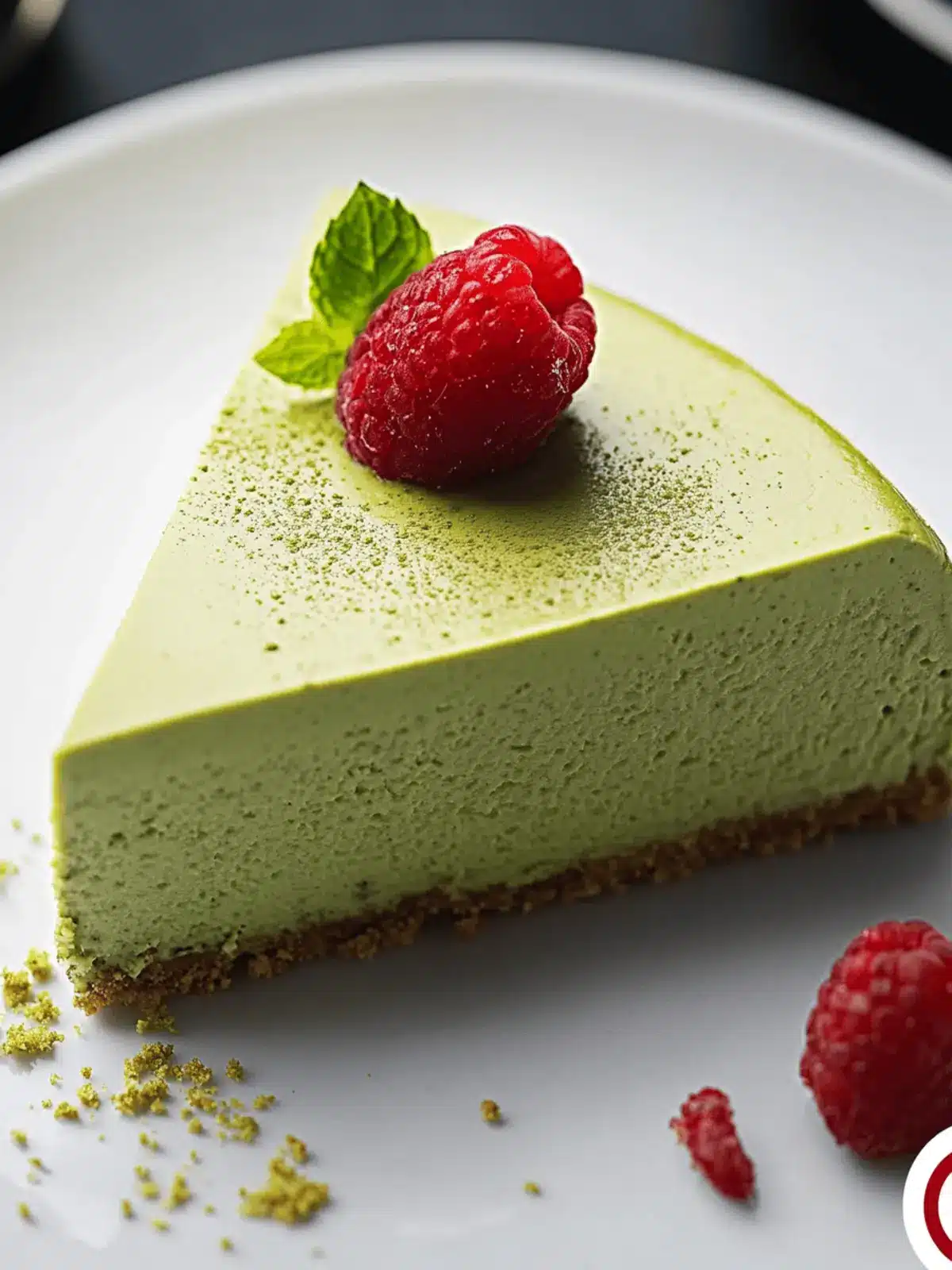
Original Matcha Japanese Cheesecake Recipe FAQs
What type of matcha should I use for the cheesecake?
Absolutely! For the best flavor and color in your Original Matcha Japanese Cheesecake, it’s crucial to use high-quality, ceremonial grade matcha. This type of matcha is finely ground and offers a vibrant green hue as well as a rich, fresh flavor compared to culinary grade, which may have a more bitter taste.
How should I store my cheesecake?
You can store your Original Matcha Japanese Cheesecake in an airtight container in the refrigerator for up to 3 days. It’s delightful chilled or at room temperature, and letting it sit for a few hours can really enhance the flavors. If you find yourself with leftovers, remember to allow the cheesecake to breathe a little for the best taste.
Can I freeze the cheesecake?
Very! To freeze your Original Matcha Japanese Cheesecake, first wrap it tightly in plastic wrap, followed by a layer of aluminum foil to prevent freezer burn. It can be stored in the freezer for up to 3 months. When you’re ready to treat yourself, simply remove it from the freezer and let it thaw in the refrigerator overnight before serving.
What should I do if my cheesecake cracks while baking?
Don’t worry—cracks can happen! To minimize this, be sure to bake in a water bath; this helps regulate temperature and keeps the moisture level up during cooking. If you do notice cracks forming, consider letting it cool gradually in the oven with the door ajar as this can prevent further cracking from sudden temperature changes.
Are there any dietary considerations I should be aware of?
Absolutely! If you have dietary restrictions, you can adapt the Original Matcha Japanese Cheesecake to be dairy-free by swapping cream cheese and butter for vegan alternatives. Be cautious with any added toppings, like fruits, paying attention to potential allergies. If you’re serving this to guests, it’s always a good idea to ask about their dietary preferences beforehand.
Can I make substitutions for the sugar in this recipe?
Yes, you can substitute granulated sugar in your Original Matcha Japanese Cheesecake with coconut sugar for a lower glycemic option. Keep in mind that coconut sugar has a slightly different flavor profile and darker color, which may affect the final look and sweetness of your cheesecake.
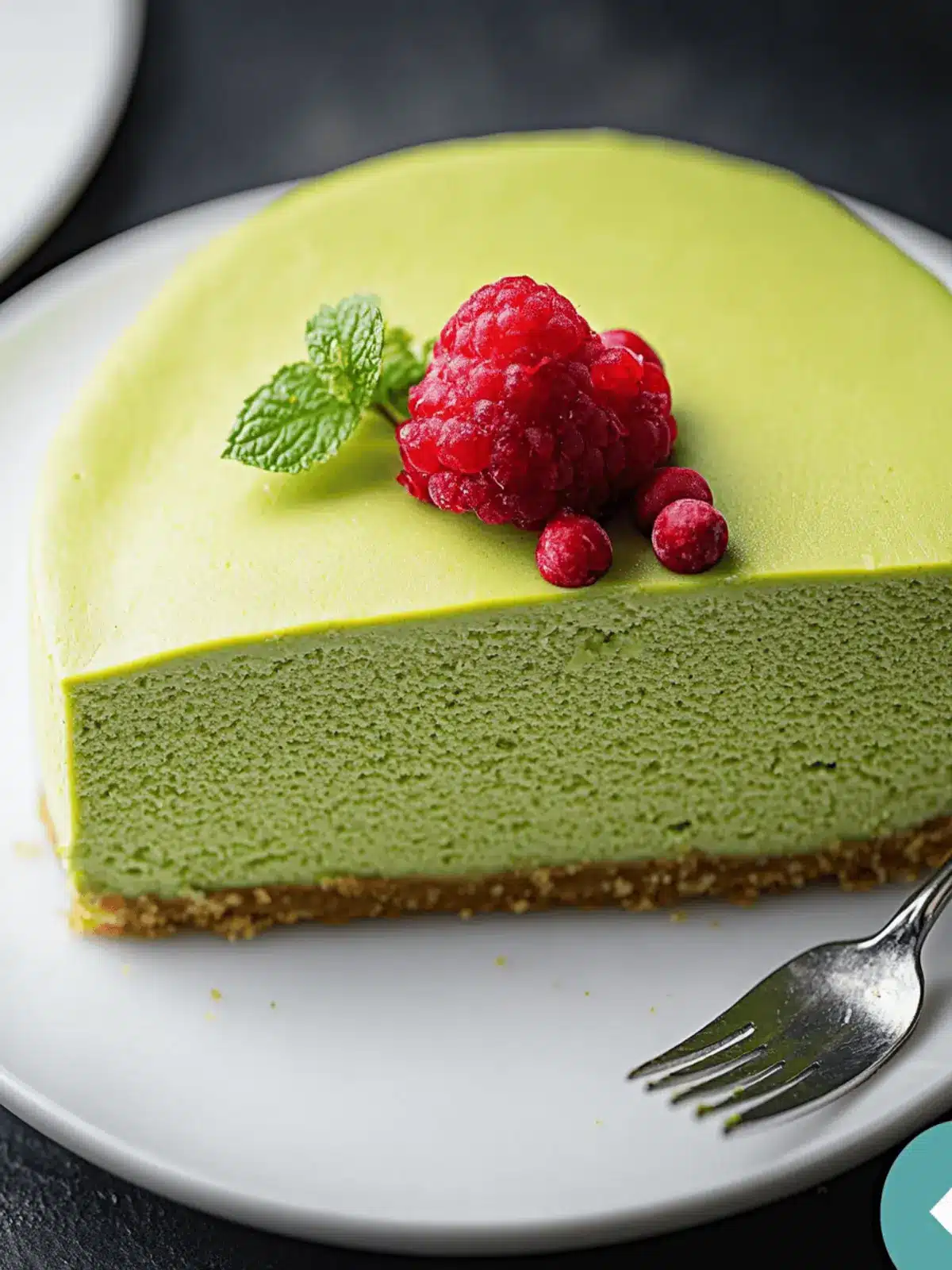
Original Matcha Japanese Cheesecake: Light, Creamy Bliss Awaits
Ingredients
Equipment
Method
- Prepare the Batter: In a saucepan over low heat, combine cream cheese and butter. Stir until creamy before adding granulated sugar, egg yolks, cake flour, cornstarch, culinary matcha, and lemon juice. Mix until smooth and well-combined.
- Make the Meringue: In a clean bowl, whisk the egg whites until soft peaks form. Gradually add cream of tartar and sugar, continuing to whisk until stiff peaks are achieved.
- Combine Mixtures: Gently fold the meringue into the cheesecake batter in three parts. Be careful not to overmix. Pour the combined mixture into a prepared pan.
- Bake: Place your cake pan into a larger baking dish and fill the outer dish with water. Bake at 320°F (160°C) for 18 minutes, then lower the temperature to 285°F (140°C) and continue baking for 50-60 minutes.
- Cool the Cheesecake: Once baked, turn off the oven and let the cheesecake cool inside for 20 minutes with the oven door ajar.
- Serve: Carefully unmold the cheesecake, dust with confectioners' sugar and garnish with fresh fruits like strawberries or blueberries.

